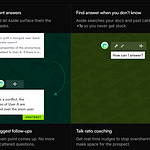The AI world has been bracing for OpenAI’s next update to Sora, expecting another step-function improvement in video generation. The announcement delivered that technical leap—Sora 2 now generates video with synchronized dialogue and sound effects, a critical breakthrough—but the real story is a strategic bombshell. This wasn’t just a model update; it was a pivot from a foundational model provider into a full-stack, consumer-facing social media company.
The most shocking part of the Sora 2 launch isn’t just the improved physics or audio capabilities; it’s the entire product philosophy behind its release. OpenAI isn’t just shipping a better tool for filmmakers; it’s launching a new kind of social platform designed from the ground up to challenge incumbents on creativity, community, and user wellbeing. This post breaks down the five most impactful and unexpected takeaways from the launch.
1. OpenAI Didn’t Just Launch a Model, It Launched a Social Network
The biggest surprise is how Sora 2 is being delivered. The primary access point is not an API or a web tool, but a new, invite-only social iOS app called “Sora” (though access is also available via sora.com). This is a direct strategic challenge to social giants like Meta and TikTok, signaling OpenAI’s ambition to own the consumer endpoint and the valuable interaction data that comes with it, moving far beyond its B2B API model.
The app is explicitly designed for creating, sharing, and remixing generations with friends. At the heart of this social experience is “cameos”—the app’s designated killer feature and the viral engine designed to build its social graph. In a telling piece of strategic analysis, OpenAI notes its counter-cyclical approach: “At a time when all major platforms are moving away from the social graph, we think Cameos will reinforce community.” This isn’t a tech demo; it’s a calculated entry into the consumer social wars.
2. It’s Not Just About Making Perfect Videos—It’s About Simulating Physics (Flaws and All)
Sora 2 represents a significant step towards OpenAI’s grander goal of creating a “world simulator”—a model that understands and simulates the laws of physics, not just paints a pretty picture. The key indicator of this leap is how the model handles failure. The announcement provides a specific example: if a basketball player is prompted to miss a shot, a prior model might “teleport” the ball into the hoop to satisfy the prompt. Sora 2, by contrast, models a realistic rebound off the backboard.
This ability to accurately simulate failure is a counterintuitive but critical breakthrough. It demonstrates a deeper, more robust understanding of physical reality, evolving the technology from a simple image-maker to a system capable of simulating cause and effect.
This is a vital capability for any useful world simulator—you must be able to model failure, not just success.
3. The Killer Feature? “Cameos” Let You Star in Your Own AI-Generated Scenes
The standout feature of the new Sora app is “cameos.” After a short, one-time video recording to verify their identity and capture their likeness, users can be inserted into any Sora-generated environment. But here’s the game-changing detail: this capability is incredibly general and works for any human, animal, or object. You can star in your own movie, have your pet join you, or animate your favorite coffee mug into a character.
OpenAI is positioning this not as a gimmick but as a new medium for communication. It’s an evolution beyond text, emojis, and voice notes, designed to turn passive consumption into an active, participatory experience.
It felt like a natural evolution of communication—from text messages to emojis to voice notes to this.
This feature unlocks immense creative and social possibilities, allowing users to place anyone—or anything literally—inside any story they can imagine.
4. They’re Designing Against Doomscrolling and Addiction from Day One
In a direct critique of the ad-based models funding its potential competitors, OpenAI is explicitly designing the Sora app to be a “healthier” platform. This isn’t just a talking point; it’s a core product differentiator. Acknowledging concerns about “doomscrolling, addiction, isolation, and RL-sloptimized feeds,” the company is implementing specific design choices and platform rules:
Giving users control over their feed with natural language instructions.
Prioritizing content from people you follow and videos that inspire creation.
Explicitly not optimizing the feed algorithm for time spent on the app.
A monetization model based on paying for extra generations, directly tying revenue to utility, not an ad model that pits user wellbeing against profit.
Built-in mechanisms to periodically poll users on their well-being.
For teen safety, the platform includes default daily limits and stricter cameo permissions. Crucially, it will also launch with “Sora parental controls via ChatGPT so parents can override infinite scroll limits, turn off algorithm personalization, as well as manage direct message settings.”
5. They’re Calling It the “GPT-3.5 Moment for Video”
To frame the magnitude of this release, OpenAI is drawing a direct parallel to the most pivotal moment in modern AI history, calling Sora 2 the “GPT-3.5 moment for video.” This is a potent comparison. GPT-3.5, the model behind the initial ChatGPT launch, transformed large language models from a niche technology into a global phenomenon that astonished the public and redefined what was possible.
By invoking this analogy, OpenAI is signaling that Sora 2 is not an incremental update but a fundamental, category-defining leap. It’s a declaration that AI video has now reached a similar threshold of realism, control, and usability that will permanently change how we think about the medium.
With Sora 2, we are jumping straight to what we think may be the GPT‑3.5 moment for video.
Conclusion: A New Era for Co-Creative Experiences
The launch of Sora 2 is far more than a technology release; it’s the debut of a product with an ambitious vision to merge AI creation with social connection. By launching a social network instead of just a tool, OpenAI is making a bold bet that the future of generative media is collaborative, participatory, and can be designed to be healthier than the platforms that exist today.
These moves—the social app, the “cameo” engine, the physics simulation, and the focus on wellbeing—are not disparate features. They are calculated steps on a much longer journey. As OpenAI’s own announcement concludes, this is all in service of building “general-purpose world simulators and robotic agents.” With Sora 2, we're getting our first glimpse of that world-changing ambition in a consumer-friendly way, and it’s a lot like creating, directing, and starring in your own movie.
2 Person Podcast here on Sora 2 Launch







